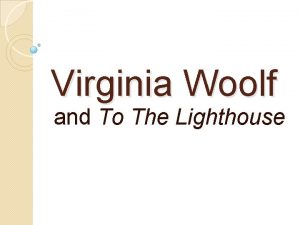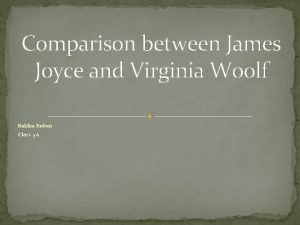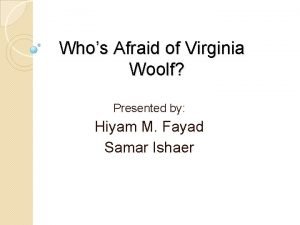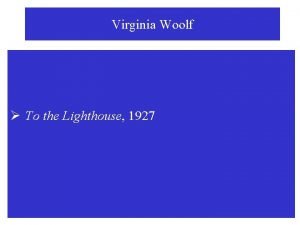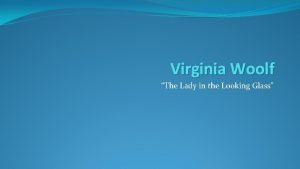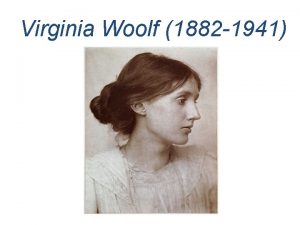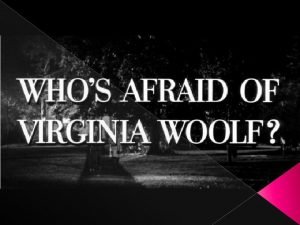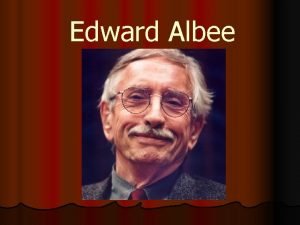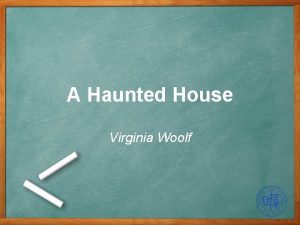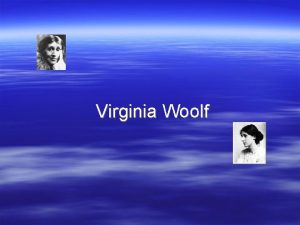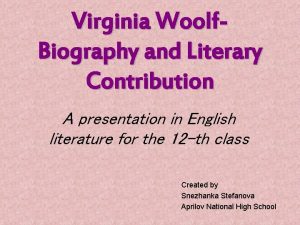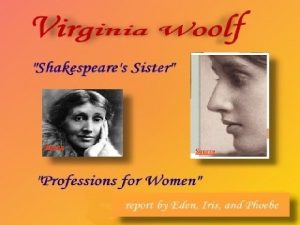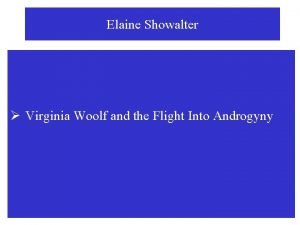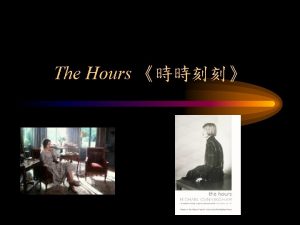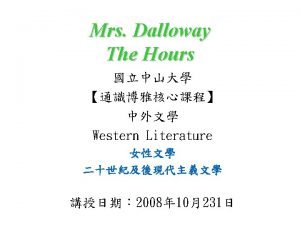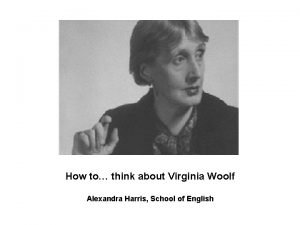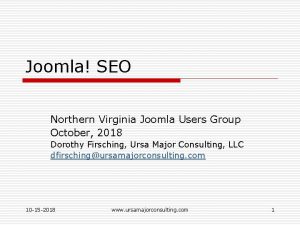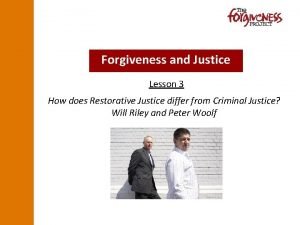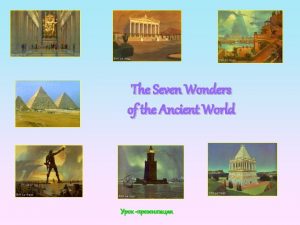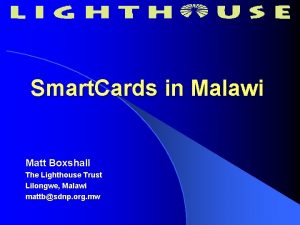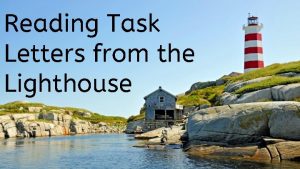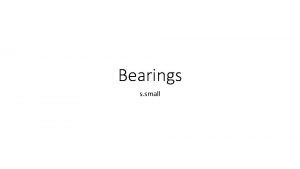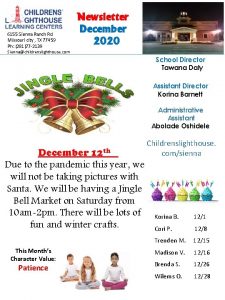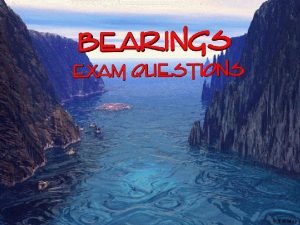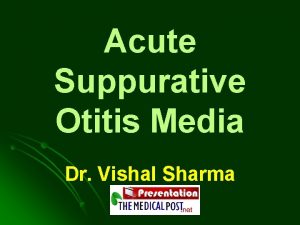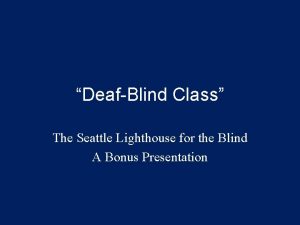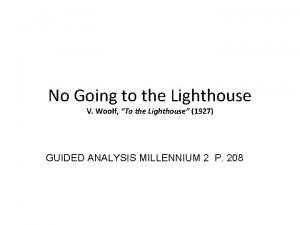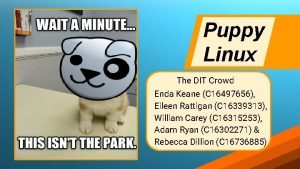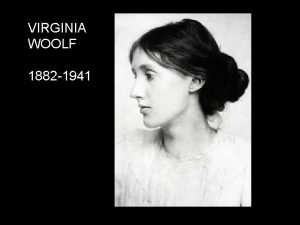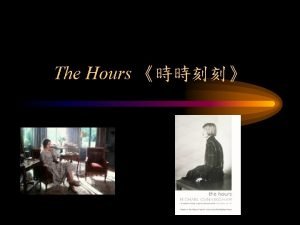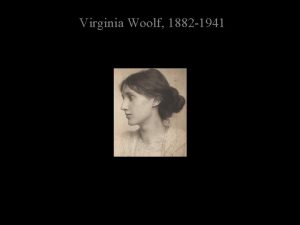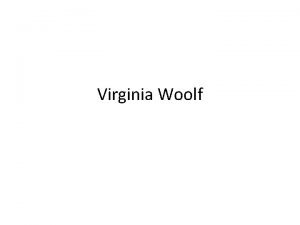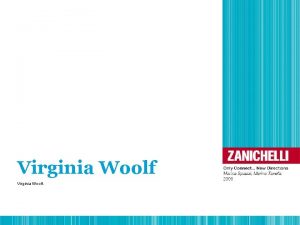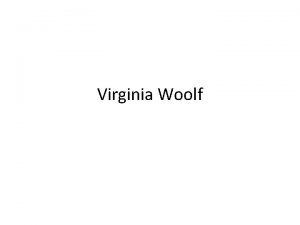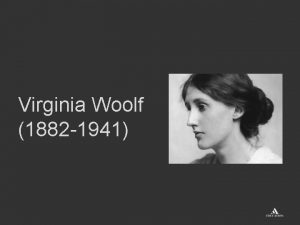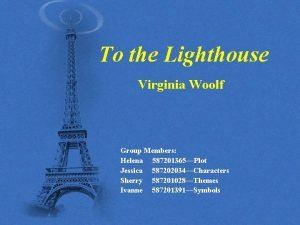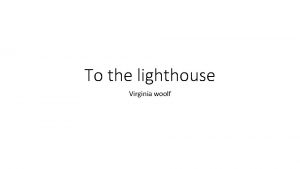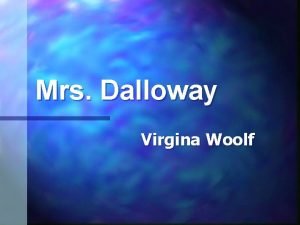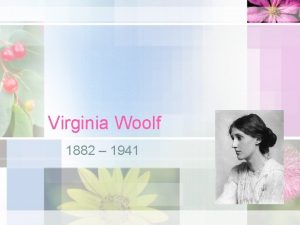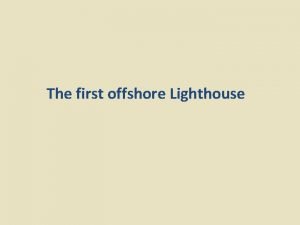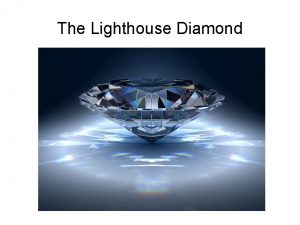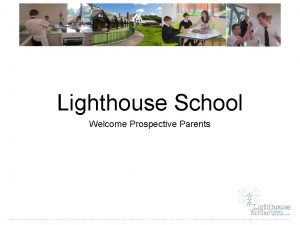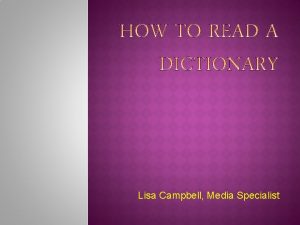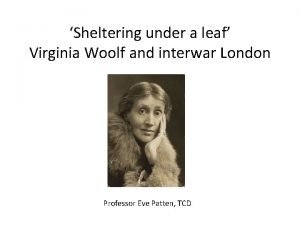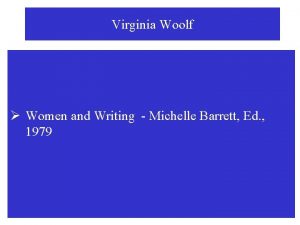Virginia Woolf and To The Lighthouse What do

































- Slides: 33

Virginia Woolf and To The Lighthouse

�What do you think of when you hear the words “Victorian” and “modern”?

�“In or about December, 1910, human character changed. ” ~ Virginia Woolf

�New Thinking in last half of 19 th century: ◦ Darwin: theory of evolution � Can we rely on religion for all the answers like we always have? ◦ Freud: theory of the unconscious � Are we really in control of ourselves? ◦ Immensely influential in changing

1882 -1941 �Life spans two World Wars and the collapse of the English empire �The movie The Hours explores her life

Family �Father, Leslie Stephen: ◦ an eminent Victorian literary critic ◦ agnostic (Woolf herself was antireligious) ◦ educated Virginia at home �Mother, Julia Stephen: a noted Victorian beauty. Echoes of her in the TTL character of Mrs. Ramsay �Sister, Vanessa: painter and leader of the English avant-garde

Inter-War Period (~1917 – 1933) �Like most women of her generation, greatly impacted by WW I ◦ Many of her friends were killed or wounded �She did her major creative and critical work �During this time major fascist and socialist dictatorships arise on the Continent �There are far away echoes of this and the war in TTL (weather/nature take on

Other popular works �Mrs. Dalloway �A Room of One’s Own

The Bloomsbury Group �Bohemian triangles”) lifestyle (“squares & �Defying convention �Virginia married a member, Leonard Woolf, in 1912 �Partnership with Leonard: ◦ She and Leonard founded Hogarth Press, which became a successful business

Important Places to Woolf �St. Ives in Cornwall �London

The Bloomsbury Group �Bohemian �Defying �Virginia lifestyle convention married a member, Leonard Woolf, in 1912

Woolf’s Later Life �Suffered a series of nervous breakdowns beginning in 1904, the year her father died �May have suffered from bipolar disorder �Died of suicide by drowning

� Clive Bell (April 1941, shortly after Woolf's final disappearance. ): "I'm not sure whether the Times will by now have announced that Virginia is missing. I'm afraid there is not the slightest doubt that she drowned herself about noon last Friday. She had left letters. . . Her stick and footprints were found by the edge of the river. For some days, of course, we hoped against hope that she had wandered crazily away and might be discovered in a barn or a village shop. But by now all hope is abandoned; only, as the body has not been found, she cannot be considered dead legally. ” � Bell wrote that it had become evident some weeks earlier that Woolf "was in for another of those long and agonising breakdowns of which she had several already". "The prospect of two years' insanity, then to wake up to the sort of world which another two years of war will have made, was such that I can't feel sure that she was unwise, " he

Woolf’s Style �You will HATE this book…. if you expect it to be like any novel you’ve ever read �Woolf didn’t care about writing something like what had been written over the last 100 years �Wanted to include what those novels had left out �Aiming at something NEW…and she achieved it!!!

What if a novel were a painting? �Experimental question: ◦ Can linear sentences in a linear work, such as a novel, do what a photo, movie, or painting does more easily: convey the sense of a multitude of thoughts, feelings, and actions taking place all at the same time?

Renoir’s Dancing at the Moulin de Galette

One of Monet’s Lilypads

Woolf uses stream-ofconsciousness � Woolf is emulating a painter trying to reproduce an exact moment in time fully, but doing it in novel form… � …Using “stream of consciousness” � “Stream of consciousness” = Interior monologue ◦ Term comes from William James, philosopher and psychologist �James argued that consciousness is not a chain of ideas, but a river or stream, where components are seamlessly merged ◦ Best known example: Final 50 pages of James Joyce’s Ulysses…unpunctuated, because we don’t think in sentences

Woolf uses stream-ofconsciousness �Woolf said that s-o-c enabled her to: ◦ show what our interior life is really like ◦ give the reader a deeper intimacy with her characters �To The Lighthouse = collective streamof-consciousness. ◦ One voice flows into another! (Because while I am thinking thoughts you are thinking thoughts, right? So how do you represent that? )

Woolf’s Theory of the Novel �She is a woman applying herself to a genre dominated by men �Believed the conventional commercial novel had become a cliché. �Believed a woman novelist had to create her own form ◦ Felt Jane Austen was one woman who had done that, however…

She “hated” P&P

Woolf’s concerns in TTL (1927) �Time: moving away from being bound to a strict sequence of events (so…no more plot line). �Structure of the Novel ◦ Part 1 (“The Window”; 122 pgs. ): takes place on one evening, between 6: 00 PM and bedtime. In that time, we meet an entire family and their guests, but spend most of our time in their minds. ◦ Part 2 (“Time Passes”; 20 pgs. ): 10 years pass. Primary characters: the house itself and time. ◦ Part 3 (“The Lighthouse”; 65 pgs. ): Influence of memory on our lives; how the present can be displaced by the past. One day.

A novel of ideas �How much tolerance do humans have for truth? Who faces reality and who avoids it? �How are men and women alike and different? �What is the role of the artist in society? �Is marriage essential for a full life? �How do we balance our need for solitude with our need for society? �How does nature influence us? �What is love?

Woolf’s goal… �Convey consciousness, particularly feminine consciousness, which she felt had been left out of earlier novels: ◦ Emotion ◦ Thought ◦ Insight

Modernism is interested in ◦ The poetic nature of the subconscious life: �Importance of symbols, images ◦ The psychological ◦ How our sub-conscious challenges our rational, realworld expectations

Modernist novel �Modernists argued that the novel needed to be more than popular entertainment �Examples of modernists you have read: ◦ F. Scott Fitzgerald (The Great Gatsby) ◦ Robert Frost ◦ T. S. Eliot (“The Love Song of J. Alfred Prufrock”)

Künstlerroman �Similar to a Bildungsroman (novel of education or coming of age) �Translated as “artist’s novel”

Kew Gardens

“Kew Gardens” Questions 1. 2. 3. 4. 5. If this is an experiment, what is Woolf experimenting with? What is she trying to represent? What stands out to you in the story? What is the point of view? What happens in this story? What themes or ideas can you find in it?

Pre-reading activity �Bring post-its tomorrow if you have a library copy �Read “The Window, ” sections (chapters)1 -3. �Resist the temptation to use Spark Notes. ◦ It’s OK if you’re confused. ◦ As an experiment, read it as she meant it to be read just to see what you notice/understand. ◦ You will understand more than you think you are! �When finished, write 2 paragraphs in your comp book. ◦ Paragraph 1: Describe the Ramsay family. ◦ Paragraph 2: Describe your experience of reading this text.

Post-pre-reading activity In your table group: 1. Circle the actual spoken dialogue in Sections (chapters) 1 – 3. 2. Choose roles (characters). 3. Do a dramatic reading of that spoken dialogue. 4. Discuss (and record in your comp. book)… a. your 1 st impressions b. my rationale for having you do this. c. how this helped/hindered your

Mini-jigsaw info You and your table group will… 1. Research your assigned topic (on next slide) 2. Prepare enough information for a brief, informal 5 -minute lesson. 3. Disperse among the other table groups on Friday and teach them about your topic. 4. (Optional, but recommended) Prepare a handout of crucial information for your students OR you can do a PPT/Prezi if

Jigsaw topics (#s 1 – 3 are on my website) 1. 2. 3. 4. 5. 6. 7. “A Room of One’s Own”: excerpt plus research on the work itself and its impact “Professions for Women”: same as above “The Angel in the House”: poem, explanation of concept and its influence/significance Suffragette movement in England in the early 20 th century The growth in vocational opportunities for women in England in the early 20 th century Effect of World War One on England’s CULTURE The Bloomsbury Group: what is was, its influence and importance
 To the lighthouse virgina woolf
To the lighthouse virgina woolf James joyce and virginia woolf
James joyce and virginia woolf Who's afraid of virginia woolf themes
Who's afraid of virginia woolf themes Virginia woolf writing style
Virginia woolf writing style The lady in the looking glass questions and answers
The lady in the looking glass questions and answers What is the stream of consciousness technique
What is the stream of consciousness technique Virginia woolf (1882-1941)
Virginia woolf (1882-1941) Who's afraid of virginia woolf introduction
Who's afraid of virginia woolf introduction Who's afraid of virginia woolf themes
Who's afraid of virginia woolf themes A haunted house by virginia woolf analysis
A haunted house by virginia woolf analysis Virginia woolf characteristics
Virginia woolf characteristics Virginia woolf presentation
Virginia woolf presentation Virginia woolf family tree
Virginia woolf family tree Virginia woolf
Virginia woolf 1941-1882
1941-1882 1941
1941 Virginaia woolf
Virginaia woolf Northern virginia seo
Northern virginia seo Peter woolf and will riley
Peter woolf and will riley Map of seven wonders of the ancient world
Map of seven wonders of the ancient world There's a lighthouse on the hillside
There's a lighthouse on the hillside Lighthouse malawi
Lighthouse malawi Letters from the lighthouse code answer
Letters from the lighthouse code answer Map of nc lighthouses
Map of nc lighthouses Tm scope
Tm scope A ship sails from harbour h on a bearing of 084
A ship sails from harbour h on a bearing of 084 Howard shore the fellowship reunited
Howard shore the fellowship reunited Children's lighthouse sienna
Children's lighthouse sienna Nacka municipality
Nacka municipality The bearing of a ship from a lighthouse is 050
The bearing of a ship from a lighthouse is 050 Ironing of mastoid
Ironing of mastoid Lighthouse for the blind seattle
Lighthouse for the blind seattle No going to the lighthouse
No going to the lighthouse Keane nyx
Keane nyx
